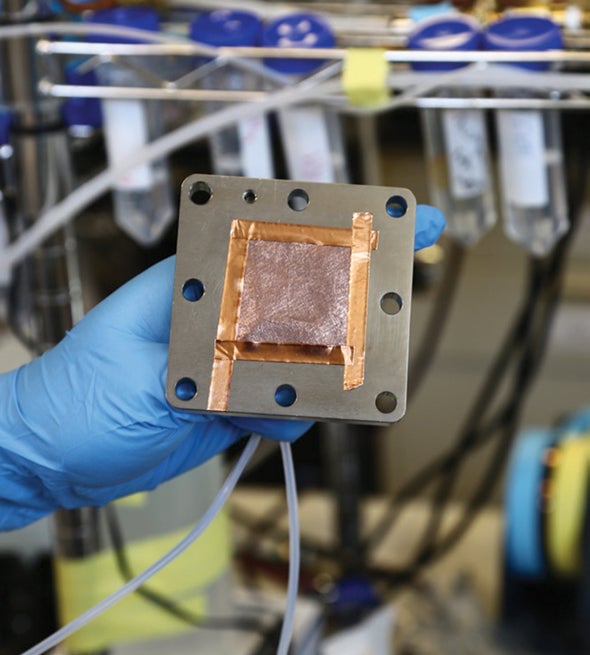Ethylene is the world's most popular industrial chemical. Consumers and industry demand 150 million tons every year, and most of it goes into countless plastic products, from electronics to textiles. To get ethylene, energy companies crack hydrocarbons from natural gas in a process that requires a lot of heat and energy, contributing to climate change–causing emissions.
Scientists recently made ethylene by combining carbon dioxide gas, water and organic molecules on the surface of a copper catalyst inside an electrolyzer—a device that uses electricity to drive a chemical reaction. The process, described last November online in Nature, could point the way toward using carbon dioxide as feedstock for chemicals and potentially fuels, helping to reduce reliance on fossil fuels and to put a dent in industrial carbon emissions.
The discovery grows out of work published last year by University of Toronto engineer Ted Sargent, describing a similar process that used more electricity and was less efficient overall. So Sargent says he sought out researchers at the California Institute of Technology who are “black belts in molecular design and synthesis.”
Caltech chemists Jonas Peters and Theodor Agapie and their colleagues experimented with organic molecules to add to the copper catalyst. An arylpyridinum salt turned out to be the Goldilocks molecule, Sargent says: it formed a water-insoluble film on the copper that positioned the carbon dioxide so its molecules reacted most efficiently with one another, without slowing down the reaction. The result was more ethylene, with fewer by-products such as methane and hydrogen.
Still, the process must become even more efficient before it can be commercially scalable and use carbon scrubbed or captured from facilities such as coal- or gas-burning power plants. Lower energy costs, already occurring with renewable energy sources such as wind, could also help make it more feasible.
“This is a significant breakthrough,” says Randy Cortright, a senior research adviser at the National Renewable Energy Laboratory in Golden, Colo., who was not involved in the study. This result, he says, is “something that a lot of people are going to pay attention to, and they're going to be able to build on.”

